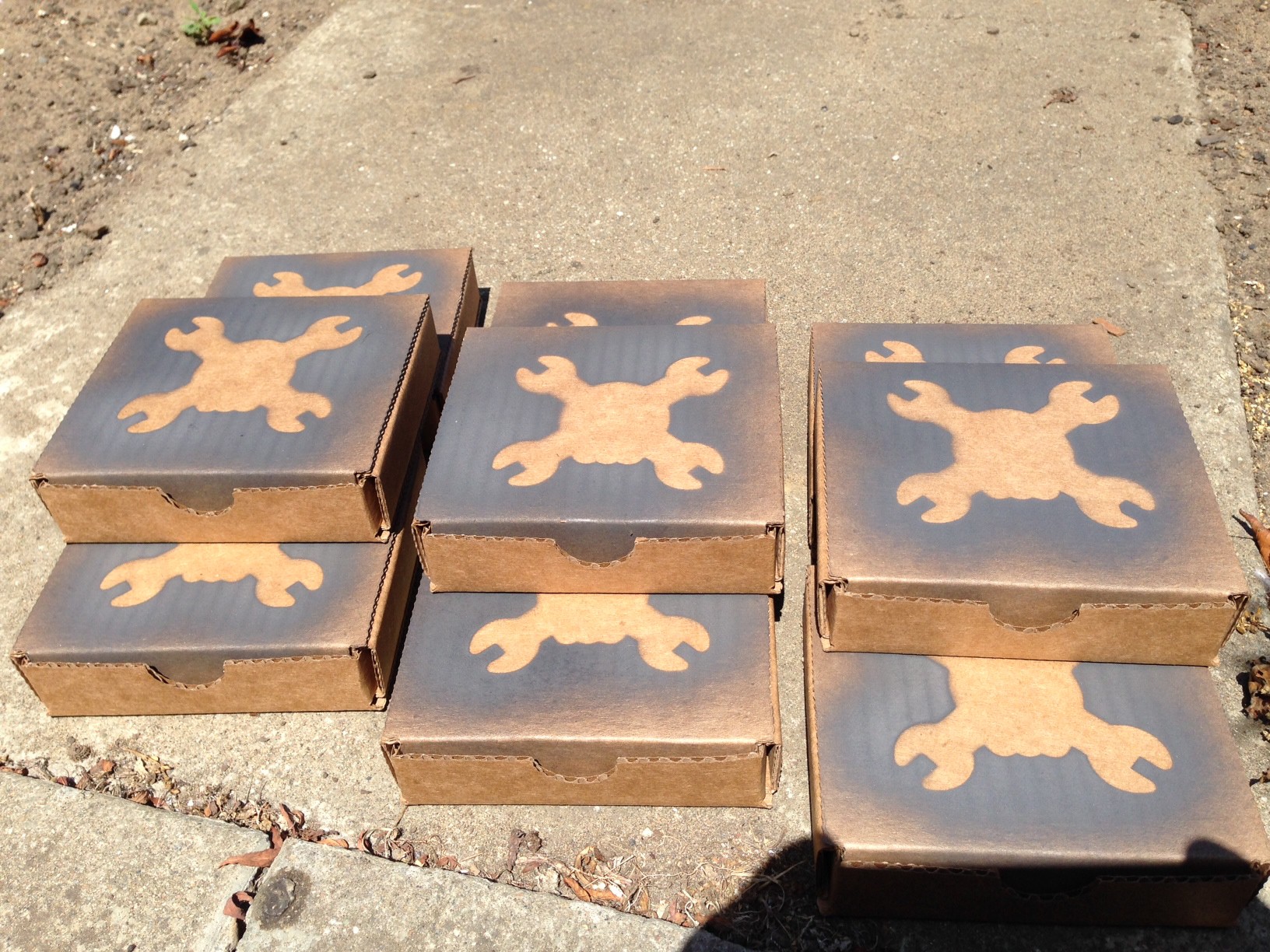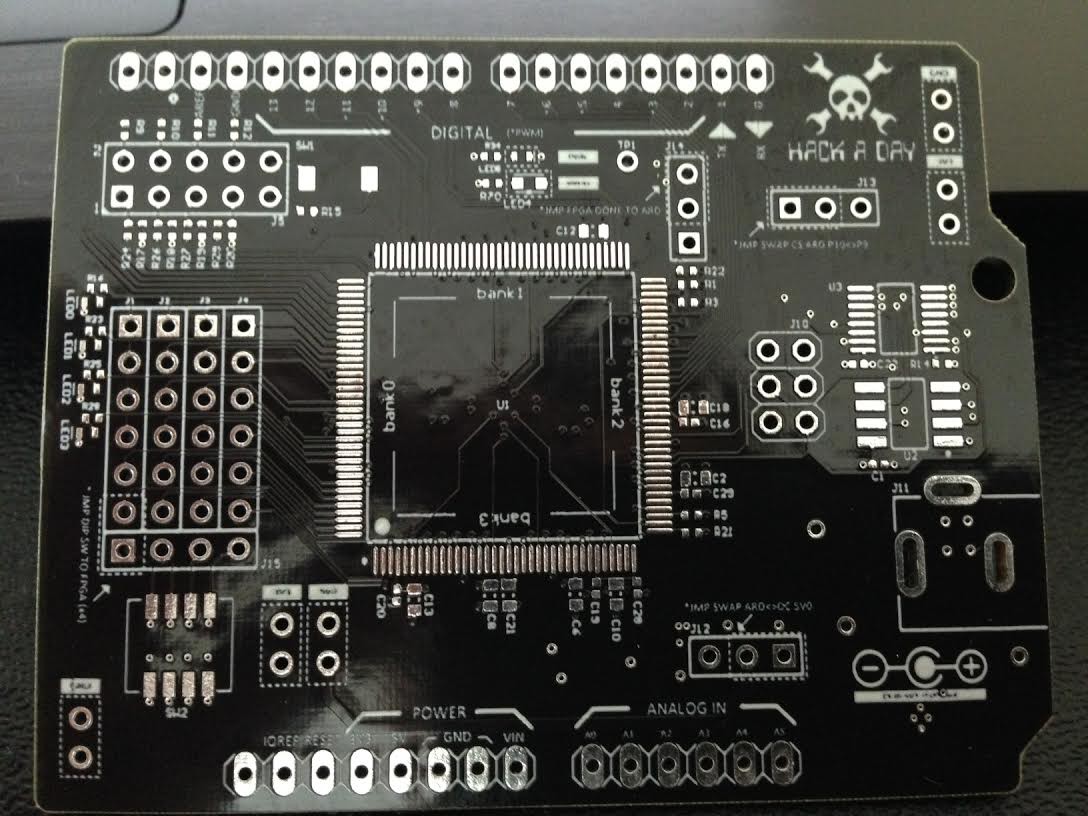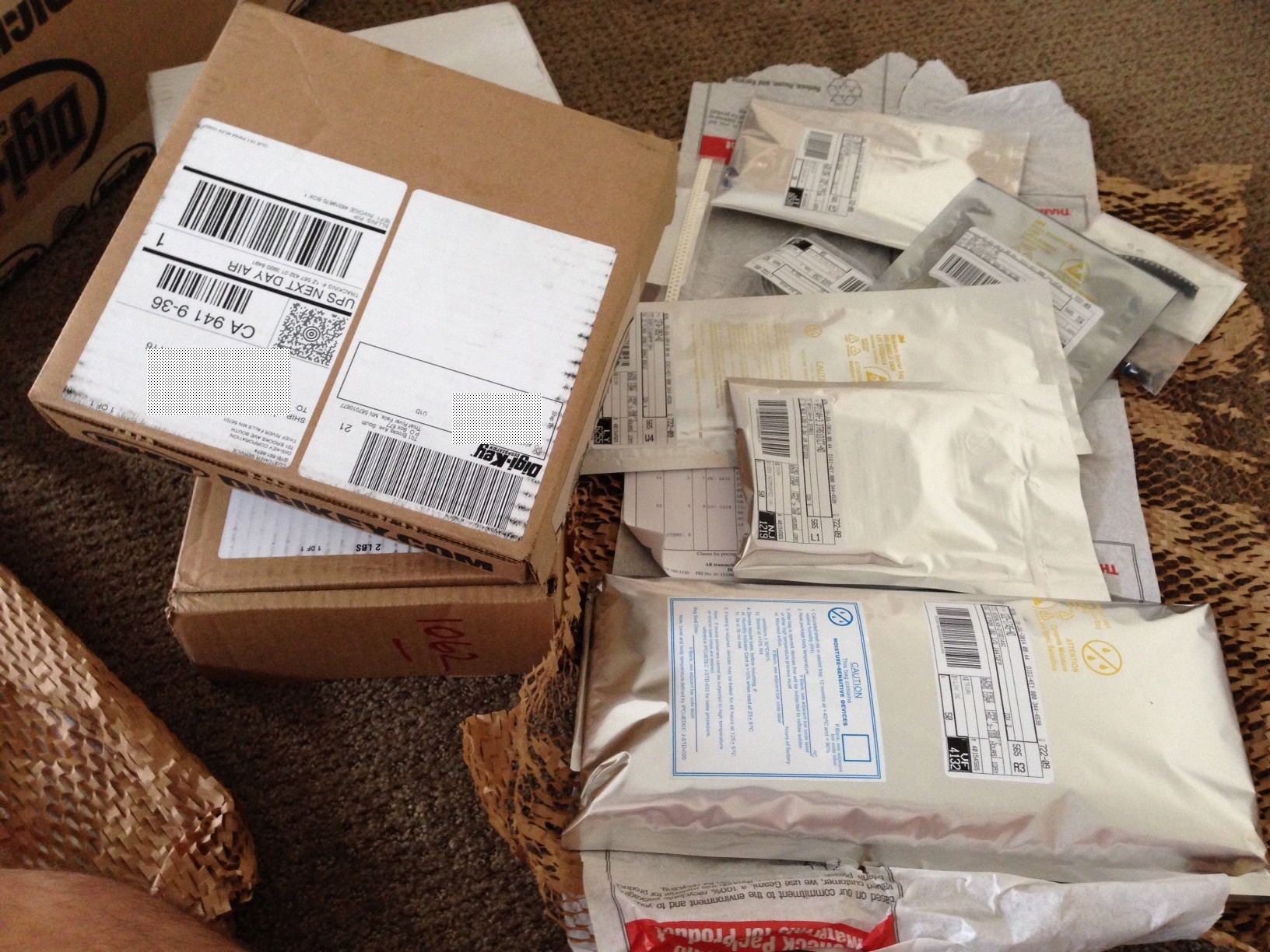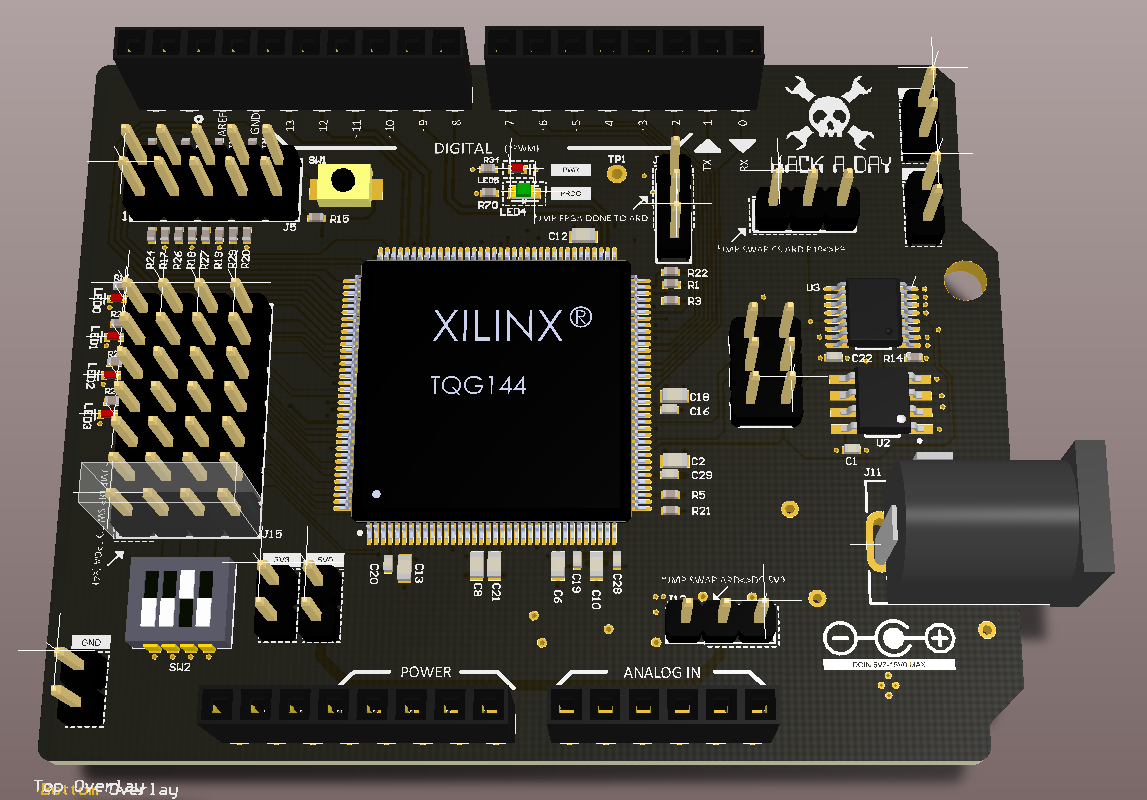-
Uploaded new files to Github
07/09/2015 at 06:32 • 0 commentsMade a few minor cosmetic tweaks, did some stuff on the PCB to try and make the next pass easier to add more IO (something that's been asked for) and really dialed in the output generators and outputs directory. Overall a nice cleanup prior to the latest round of fab. Boards are in the pipeline for mfg and will be 'in stock' very soon again! Check out the github repo. Also planning on changing the licensing to MIT so should make it much easier for folks interested in using this in their own products. Much of this can now be reused for my iCE40 design which is underway and after a 12-hour flight from SZ, I have only a little left to finish to make a second FPGA board, this time using the lattice parts. Altera to follow.
-
Uploaded first how-to video...Walkthru
12/11/2014 at 07:10 • 1 commentJust uploaded my first video on actually using the board. There are a few others to follow. The video is found on Youtube:
This describes the various interfaces, the use of the resources, the jumper settings, power supply, etc.
I have also uploaded the first "Blinking LEDs" example for use with the Xilinx software, available on Github.
-
More FPGA Boards Back & Working!
10/28/2014 at 23:27 • 3 commentsWhew! Last round of mods were huge because as you come to find out quickly, anytime you add a level translator to a board - much less two & much less 10 channels each - you end up having to reroute most of the PCB layout. And as though that wasn't enough, I decided to make a bunch of other small updates and signaling fixes / improvements such that board (a) is now meaningfully different from board (b). <Shudders>
Still, today the box of boards came back - first time populated by someone other than me - and they look and (more importantly work) awesome. The board shop this time took their sweet time but the wait was worth the cost (almost 10:1 versus US companies for the same quote).
A few more small tests and it's away they go to the store to be sold! :)
-
Level Translation Mods
10/01/2014 at 23:57 • 0 commentsThe first pass of this board was built with the Due in mind (3V3) and other development boards that I had sitting around, almost all of which *other* than Arduino were 3.3V. In planning the evolution of this however, it quickly made sense to include support for other 5V devices such as the Uno and other Arduino boards. So I have gone ahead and added a Level Translation circuit and respun the board now with some level translators that will convert the Arduino's 5V0 outputs to a nice, user-friendly 3V3 signal for the FPGA. This'll ensure support for the Uno and other Arduino's not using 3V3 IO voltages. Likewise, I made a few other small improvements and fixed a few snags that deserved some attention.
Testing the level translator on a breadboard...
![]()
Schematic for the level translation circuit...
Above is the schematic (new files will be uploaded to github shortly) for the level translator and because the layout needed to change pretty substantially to accommodate these two new devices, the boards went back to fab and are going thru proper assembly at the moment.
The part used for level translation is the SN74CBTD3384. It's a 24-pin TSSOP and it's relatively small, cheap, and performs pretty well with very low series resistance. Designed for performance up to about 10 MHz and provides a nice interface to the arduino UNO and other 5V0 devices.
-
Glamour shots
09/04/2014 at 00:33 • 1 commentNothing really to add here except a few simple glamour shots to show how things ended up. Connected, in this case, to a Due just for fun.
-
building a (budget) box I'd be happy to open
08/24/2014 at 20:47 • 0 commentsRecently I'd gotten a fair bit of interest from folks wanting to buy or or trade for one of these FPGA boards...And I must admit, I'm not terribly capitalistic when it comes to stuff I build outside of the work context (I often find I just end up giving stuff away, rather than trying to profit on them). Still, I feel that generally everything I build is a reflection / measure of me and my interests and passions and enthusiasm and as a result, I hate to "ship" junk. And I hate to own junk! Better put: I want things to look pro, even if they're outside of the professional context (things move slower, but they just tend to be more 'agreeable' all-round).
So when it came time to come up with boxes to ship to folks, I thought I'd spend a little time trying to get this right. And though I began by getting it wrong - all wrong - I managed to recover nicely I think and these express the 'spirit' of this board in a way that makes me comfortable sending it to my mates / others I've come to know thru electronics / n'er-do-well hackers, what-not.
So the first order of boxes arrived an candidly, they sucked. Corrugated die cut, white on one side, natural on the other. The white is faded, poorly applied, the folds are not crisp and clean, the slots look to have been cut far to large for the flap thickness (makes the boxes loose along the edges) and the overall accuracy is rubbish. I'm embarrassed for the USA stamp they bothered to apply to a crap box. You can see the thin paper over the corrugation making them weak and hard to managed without some serious tape / glue. Have a look:
![]()
*****
**Still, I tried to "make-do" (if I find myself using this expression, it is undoubtedly a reflection of frustration and poor judgement more than anything else)
![]()
![]() ***
******Ok, complete rubbish. I will NOT send this off to a friend. It's totally unacceptable (I'm that guy that puts stickers in a box along with your xmas present...details!). So I packed it in and I pinged my good friends at Uline. They are pro. They do boxes. All sorts of boxes. And they do them well.
What I got was a far superior product. Well cut, sturdy, and although slightly larger (4x4" vs 3x3") there is clearly a far better process afoot here than at the first place I used. Still die cut but looks to been done with better materials, better equipment, and the sort of love I like to see. Have a look:
***
***Now that I had a better box, I still didn't have an awesome one. I had something nice, solid, more precise, but I wanted awesomeness. Maybe not apple's barely-air-gets-through precision (impossible to do in my house on a budget) but something that at least looked cool and that I might keep after I took the board out and use for knickknacks like jumpers or those extra header bits or such. Nice to pack away that arduino or flying leads and have some room for the USB cable and what-not.
So I go my thinking cap on and thought to use the Hackaday logo on the outside of the box.
First I tried some die-cut stickers...
***
***
Nah, fail. Nice and all, but too much contrast, not enough of a story in there.
This is a board for people who want to build whacky shit with FPGAs and it should reflect that. I couldn't have a clean edge, precision cut sticker on the box. (Inside maybe) I needed something that also complemented the rough edges of the imperfect box. So I just happened to be sitting in my office and inspired by a pic of graffiti that serves as my desktop background, I decided to use spraypaint.
(Think: sweet road crew awesomness...what better to have in your gearbag than an FPGA board?)
...But with what image? Why the Hackaday logo of course! (thank you to the die cut sticker that served as my cheap stencil)
***
Tag that thing...
![]()
***
![]() ***
******The lineup...
![]()
***
***Something I'd keep on my desk...
![]() ***
***![]()
***
Altogether I'm pretty pleased with the outcome. It's not perfect perhaps but I think it's a cool complement to the awesome black solder-masked FPGA goodness inside of the box. This is the sort of thing I would hope someone would think twice about dumping in the recycling bin, and may even use to send something awesome someone else.
-
Ding ding...Round 2 - New board look purty
07/17/2014 at 17:50 • 0 commentsGot the new boards back from Advanced Circuits (they rock BTW...attention to detail like few others) and they look awesome. Went with black soldermask this time around and it makes things look so much cooler (much more Hackaday-chic). These boards have a few new details including dipswitches (bloody small!), LEDs, a few extra test points, tented vias (BGA Soldering loves tented vias!) and a few other cosmetic tweaks esp. to the silkscreen. The first batch worked fine so hoping this works without issue as well.
![]()
-
Parts arrive for first 50p run!
07/16/2014 at 17:15 • 0 commentsGot enough parts to build 50 boards today. Updated stencils arrived, woo hoo! Retreating into soldering dungeon to spin up one or two to verify all's well with the world.
![]()
-
Board goes 3D - like *really* 3D
07/15/2014 at 22:40 • 0 commentsAdded step models to all of the interesting parts of the board to make things look and feel more authentic and to size up enclosures and such that I will release that you can easily 3D print. Have a look at the pic below in the project overview.
-
New Design Files Uploaded To Git
07/04/2014 at 07:57 • 0 commentsUploaded a new batch of design files including PDFs to github. The repository can be found here and this rev contains some nice functional improvements. See previous project log for some details and see git log for summary of changes. This will be the final few changes before I build a reasonable qty of these boards (~100). If anyone's keen to own one, let me know...I have the BOM down pretty low now and be a nice addition to the tool chest.
Arduino-Compatible FPGA Shield
Spartan 6 FPGA Shield includes SPI Configuration Flash, Breakout Headers, SRAM, programmable from Arduino or SPI Programmer
 technolomaniac
technolomaniac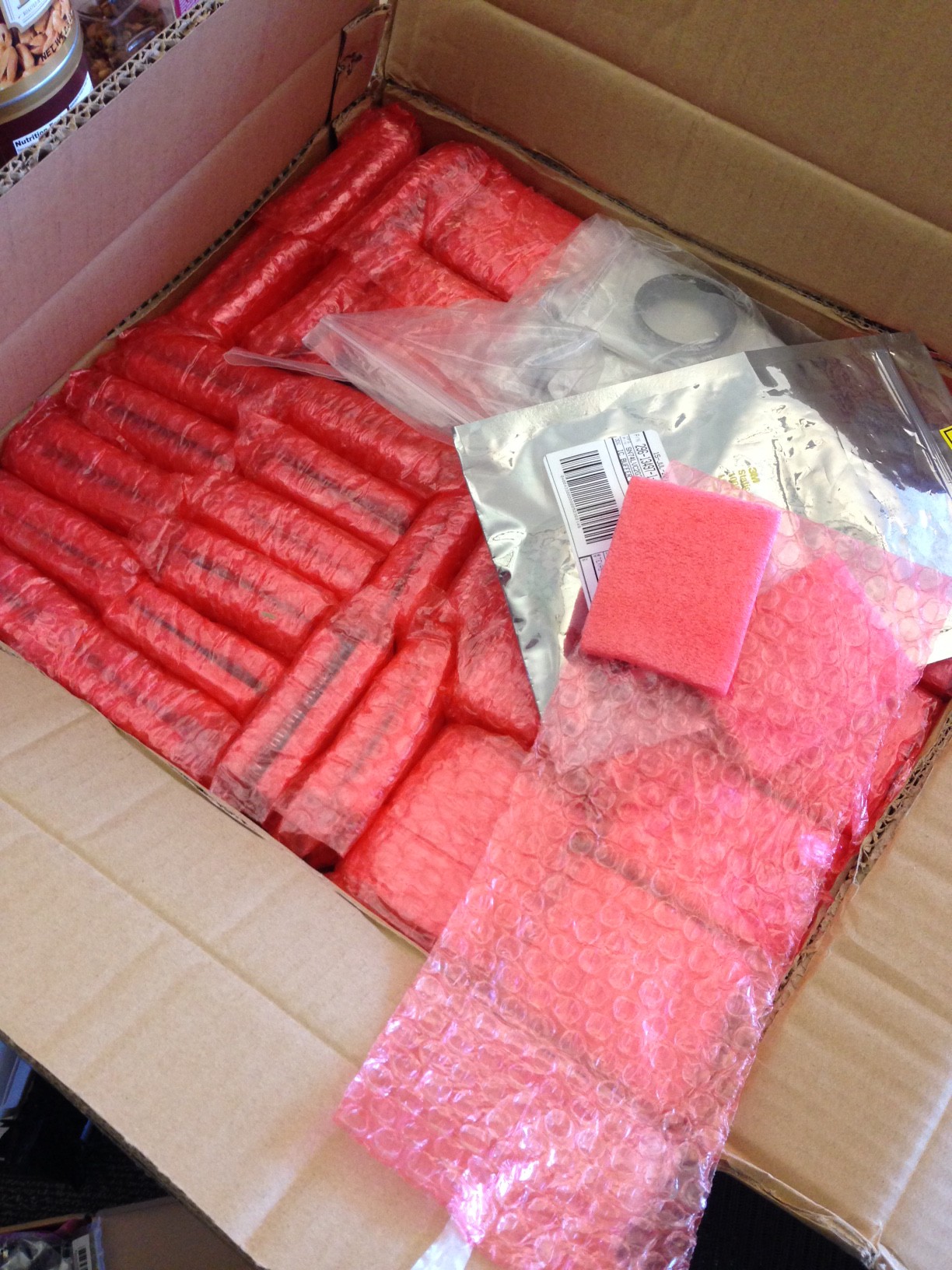
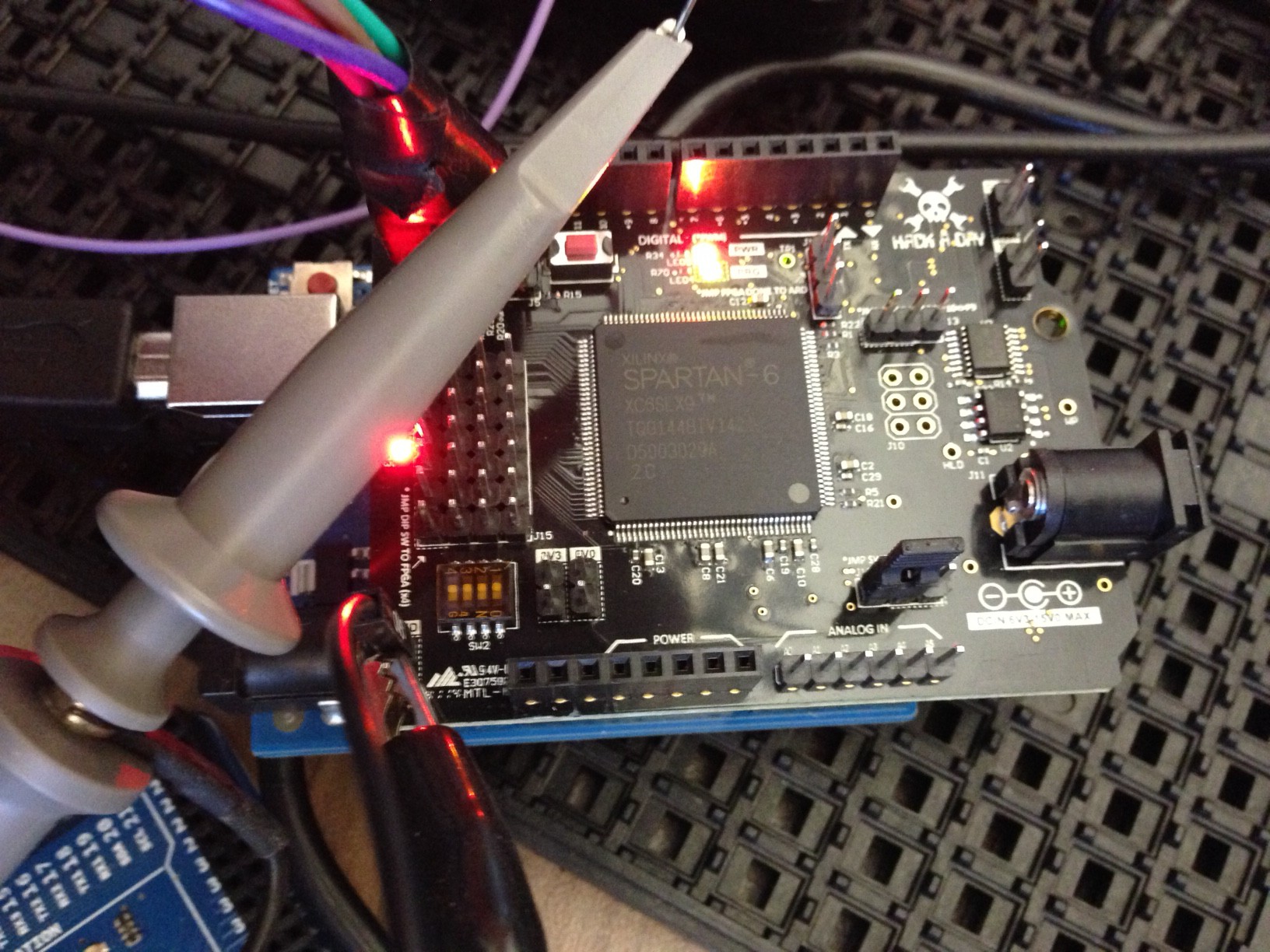
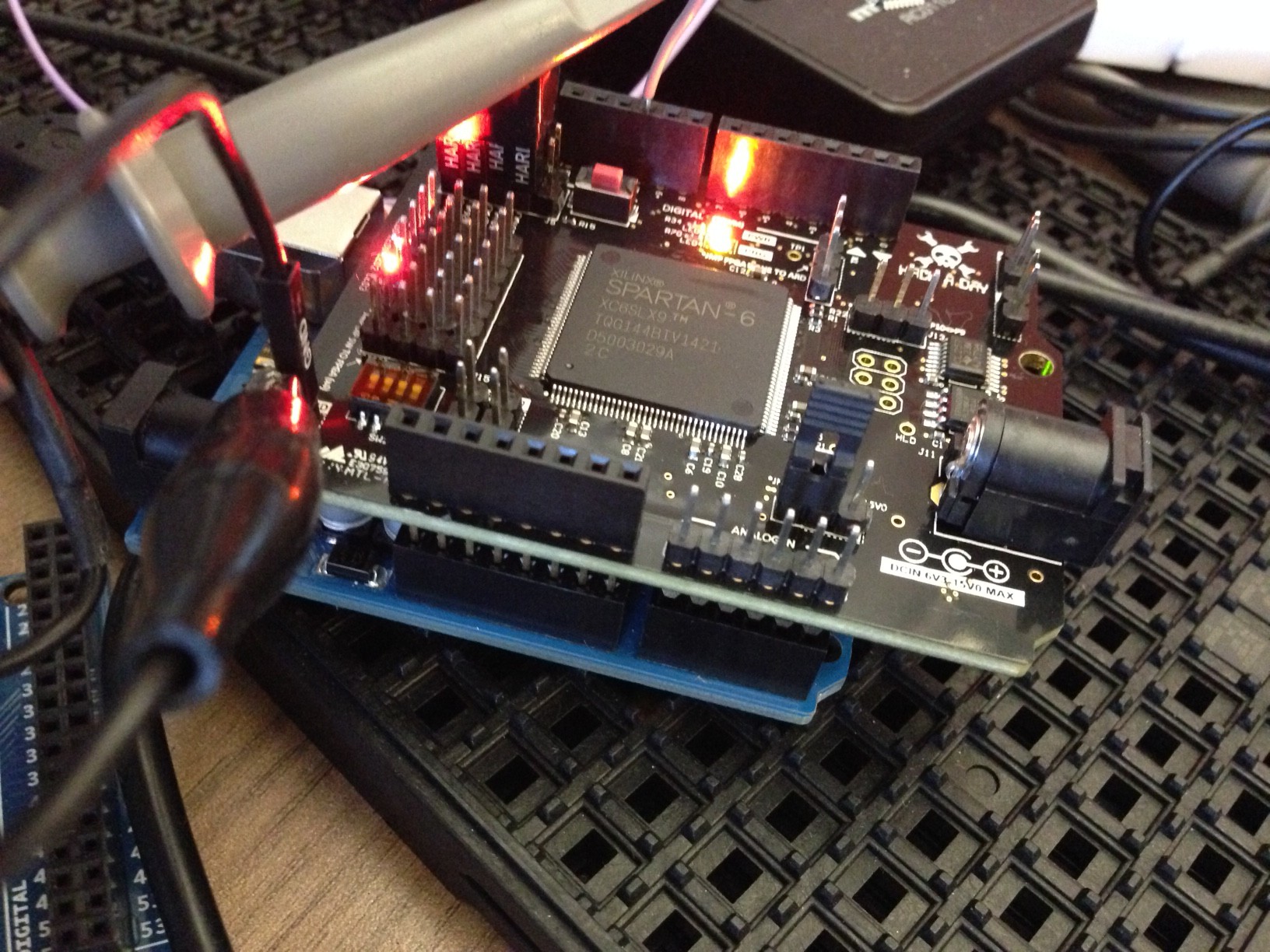
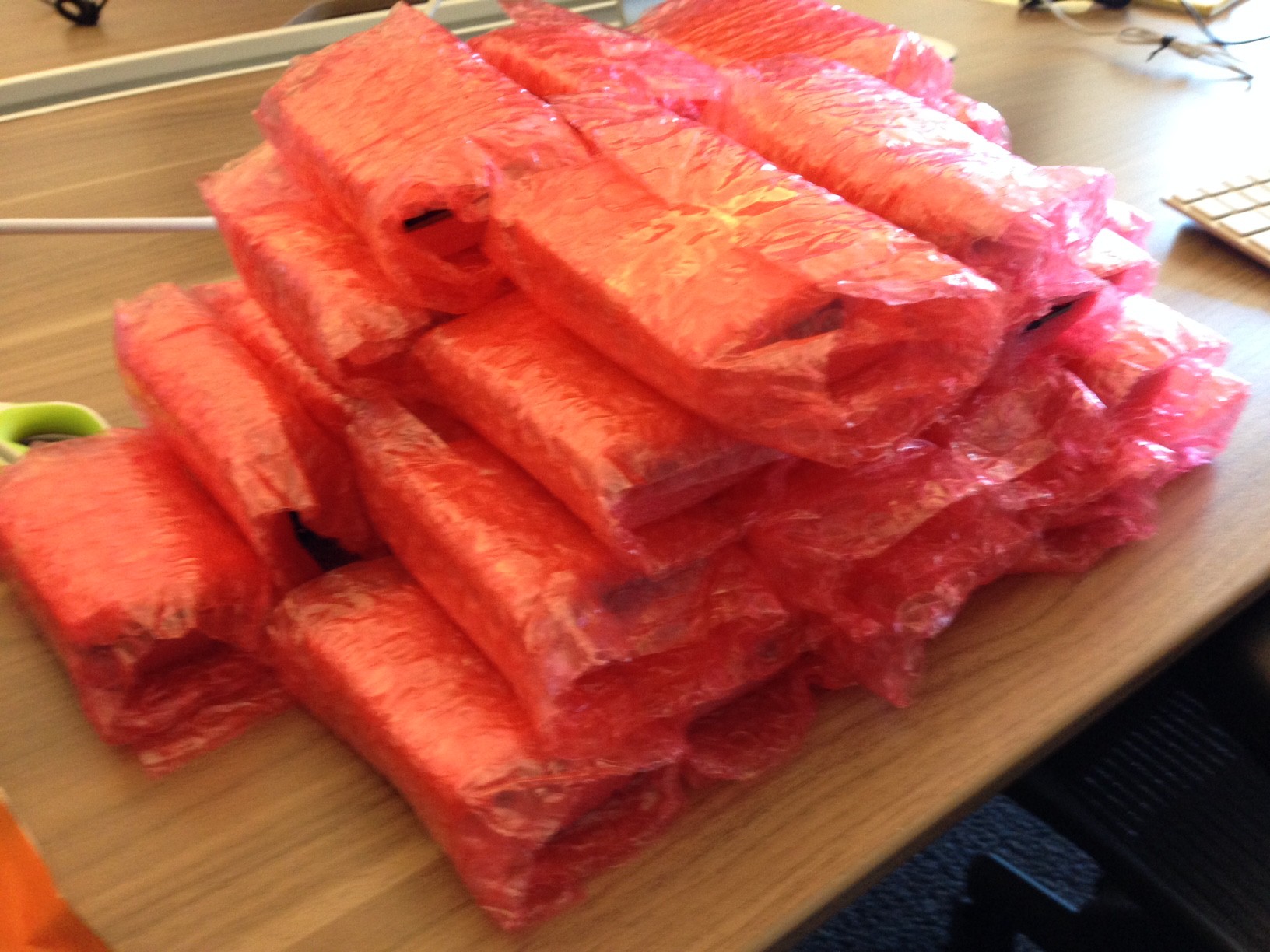
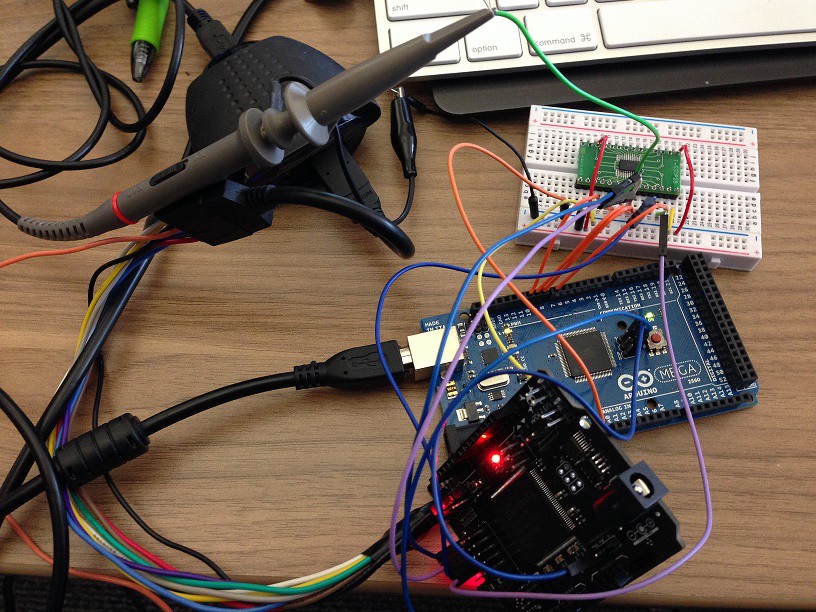
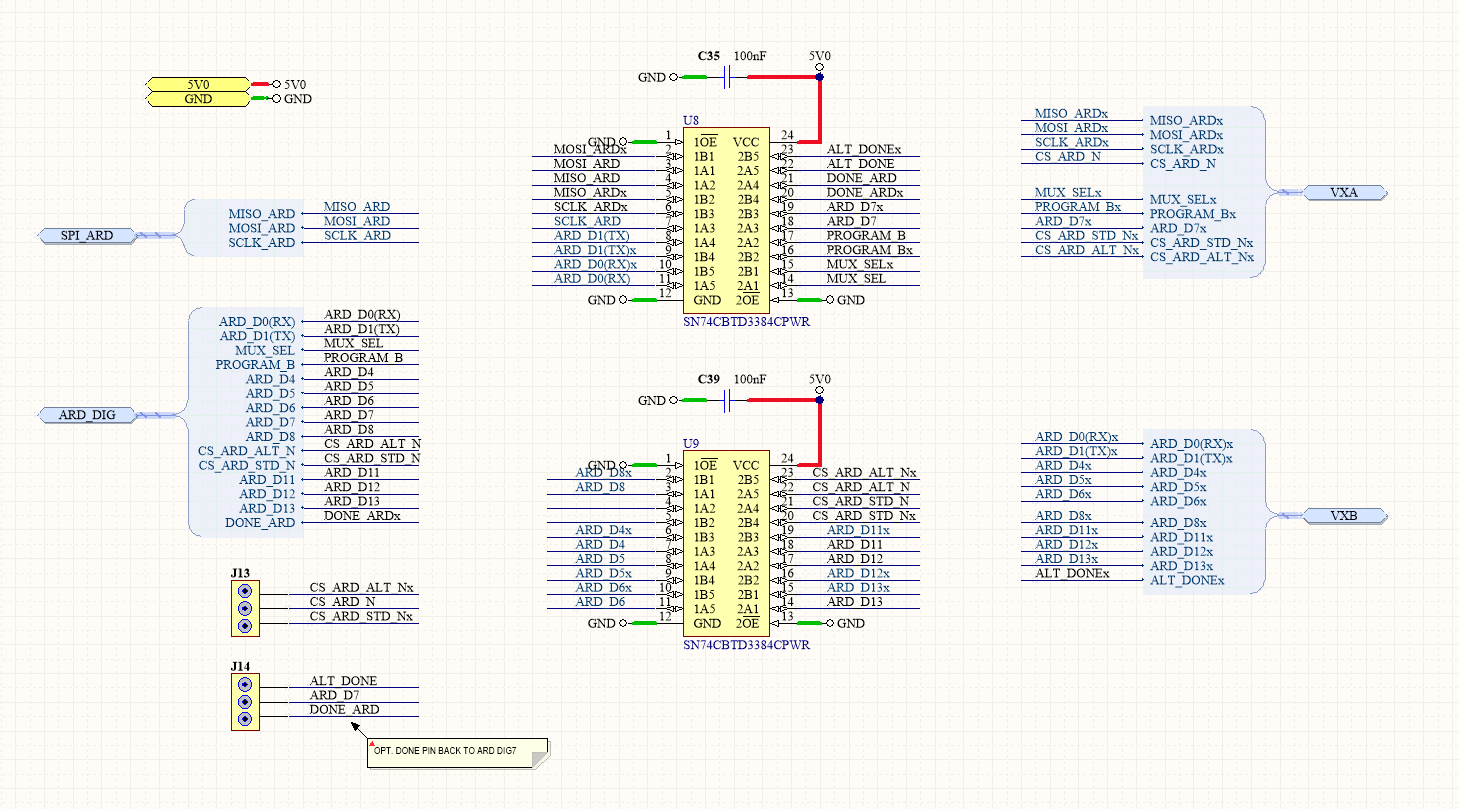
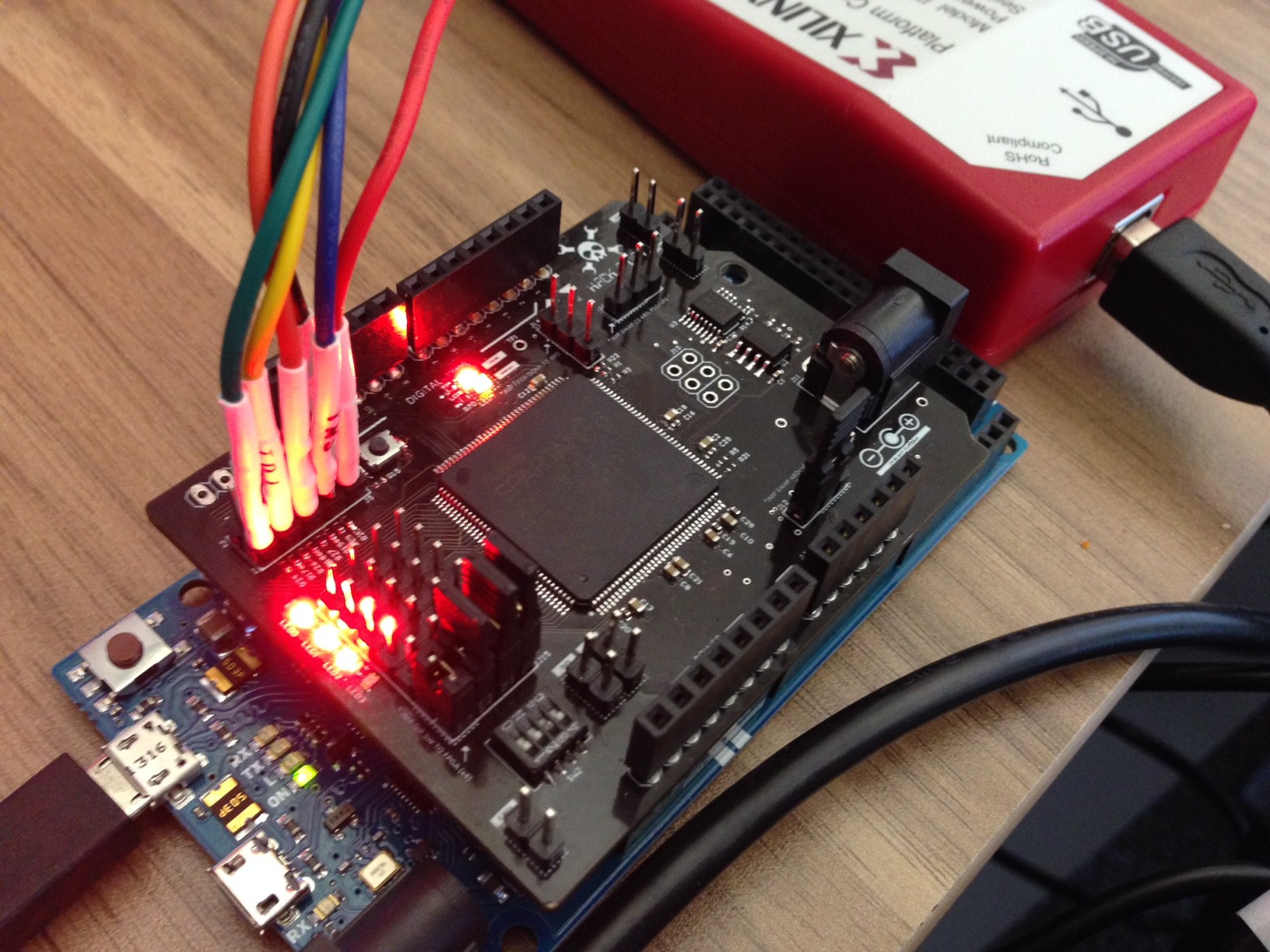

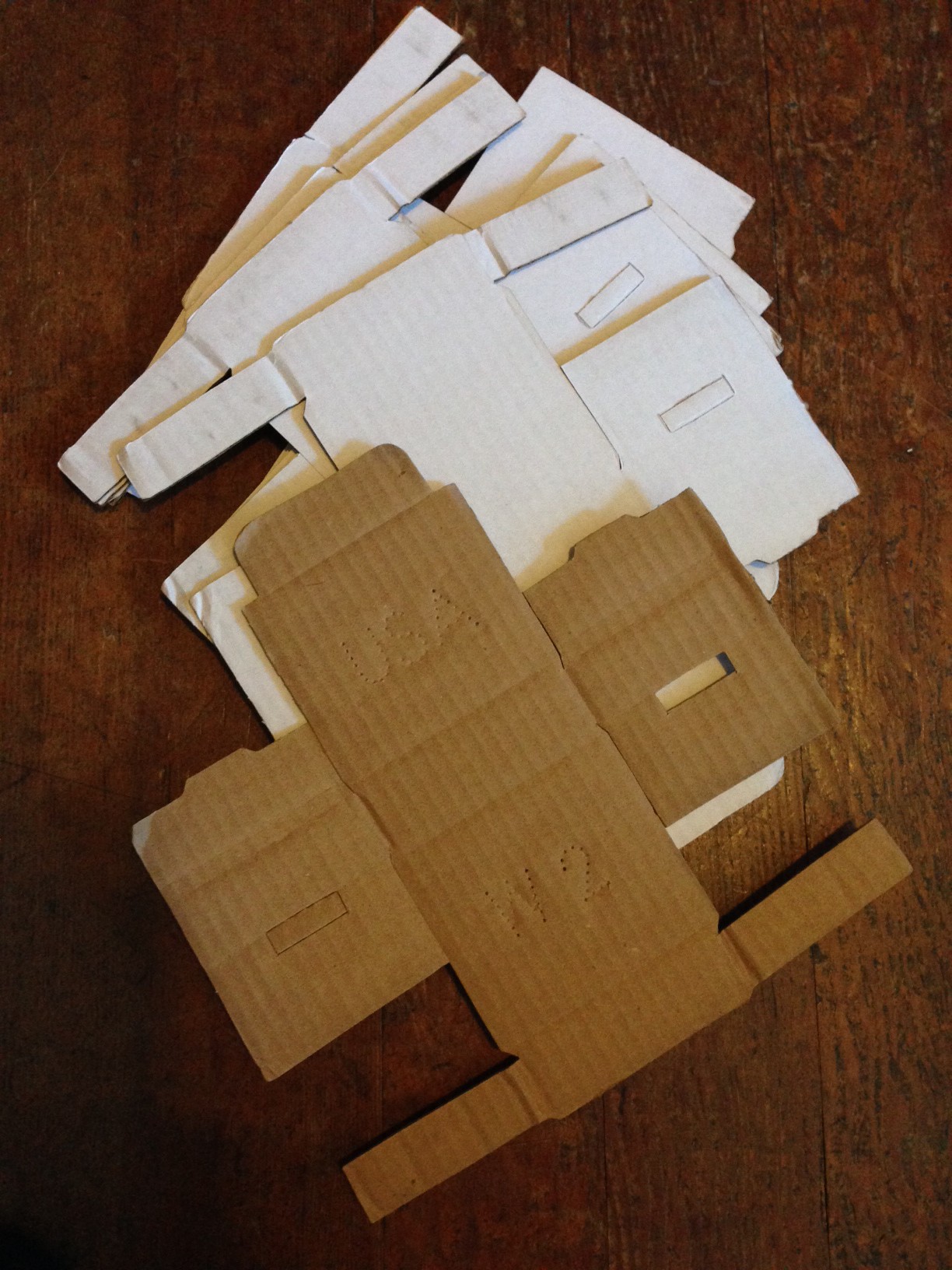
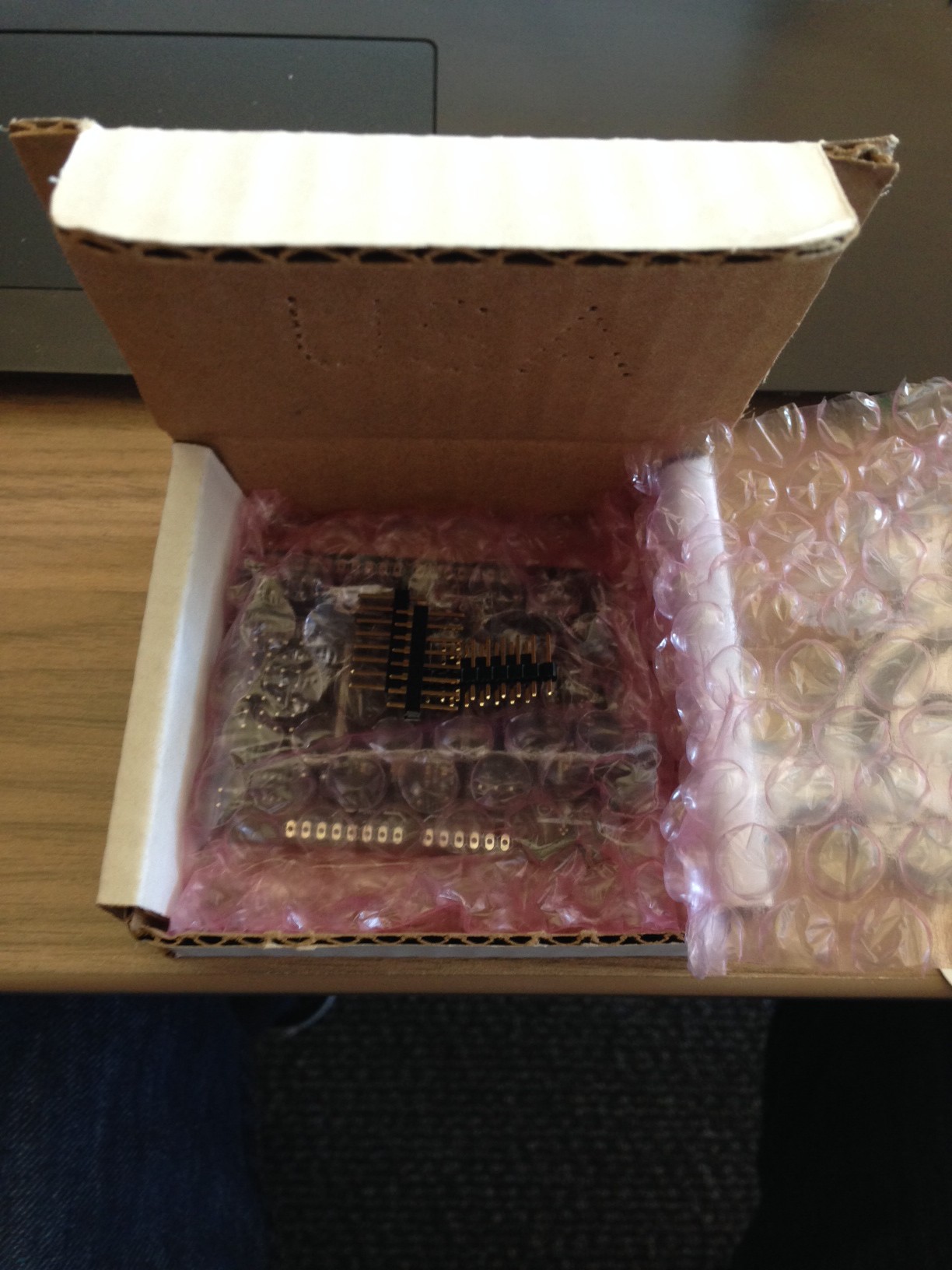
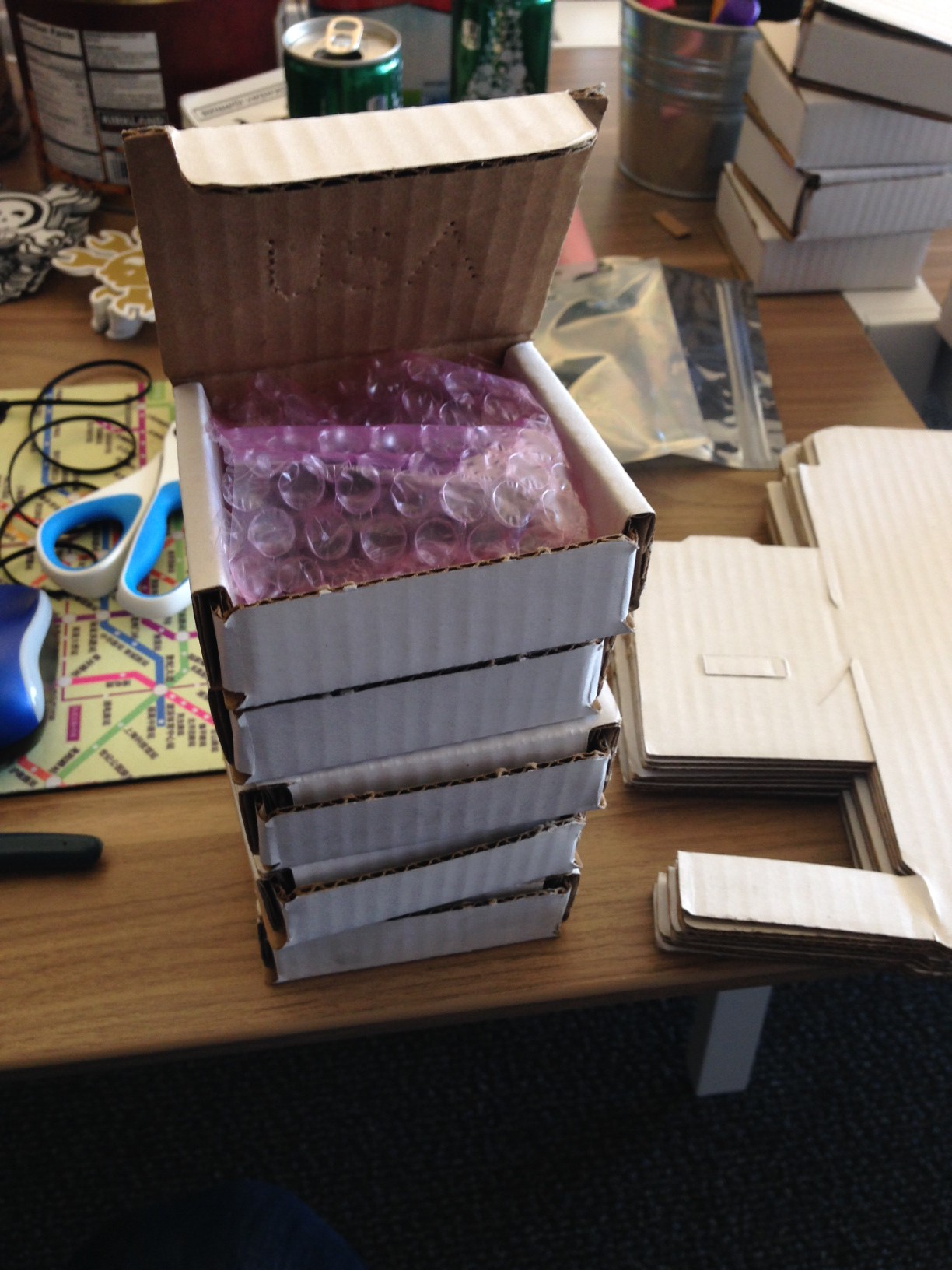 ***
***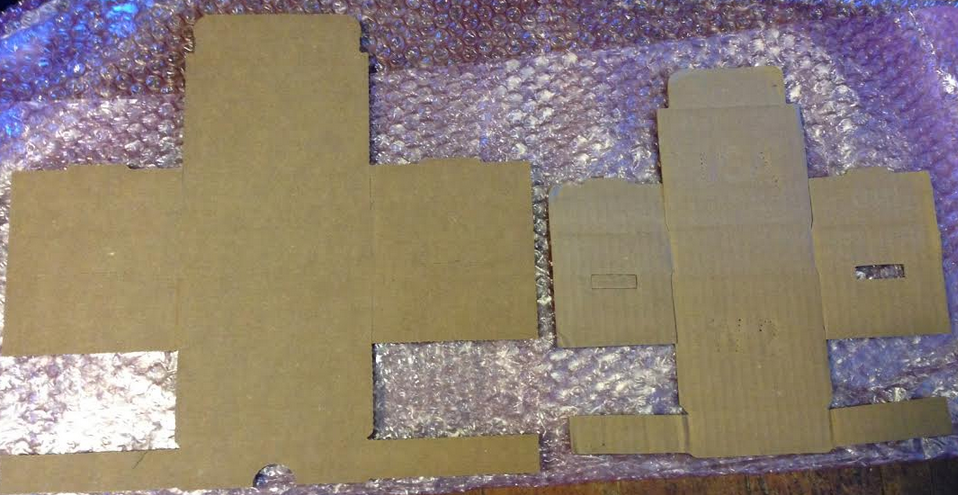
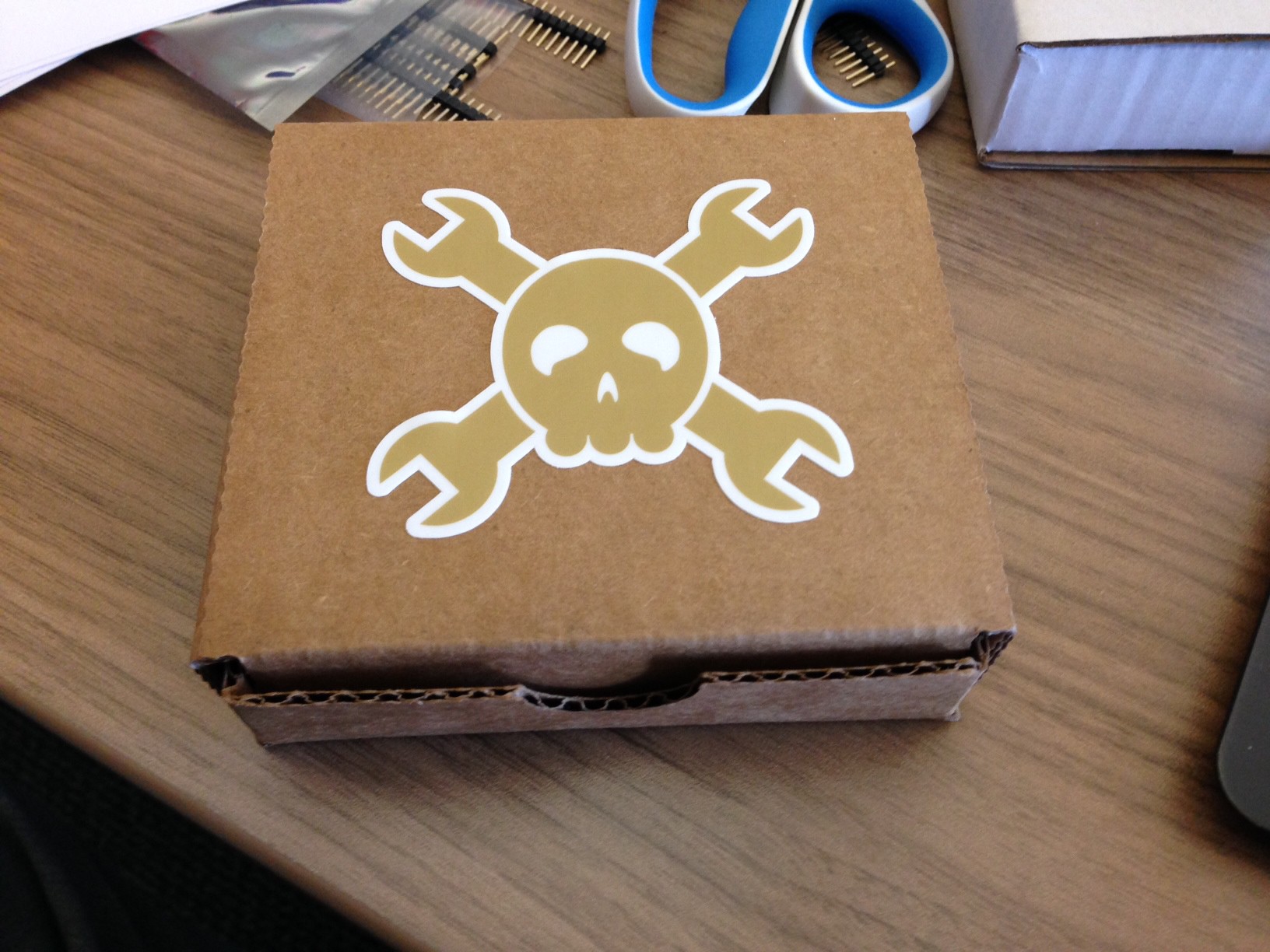
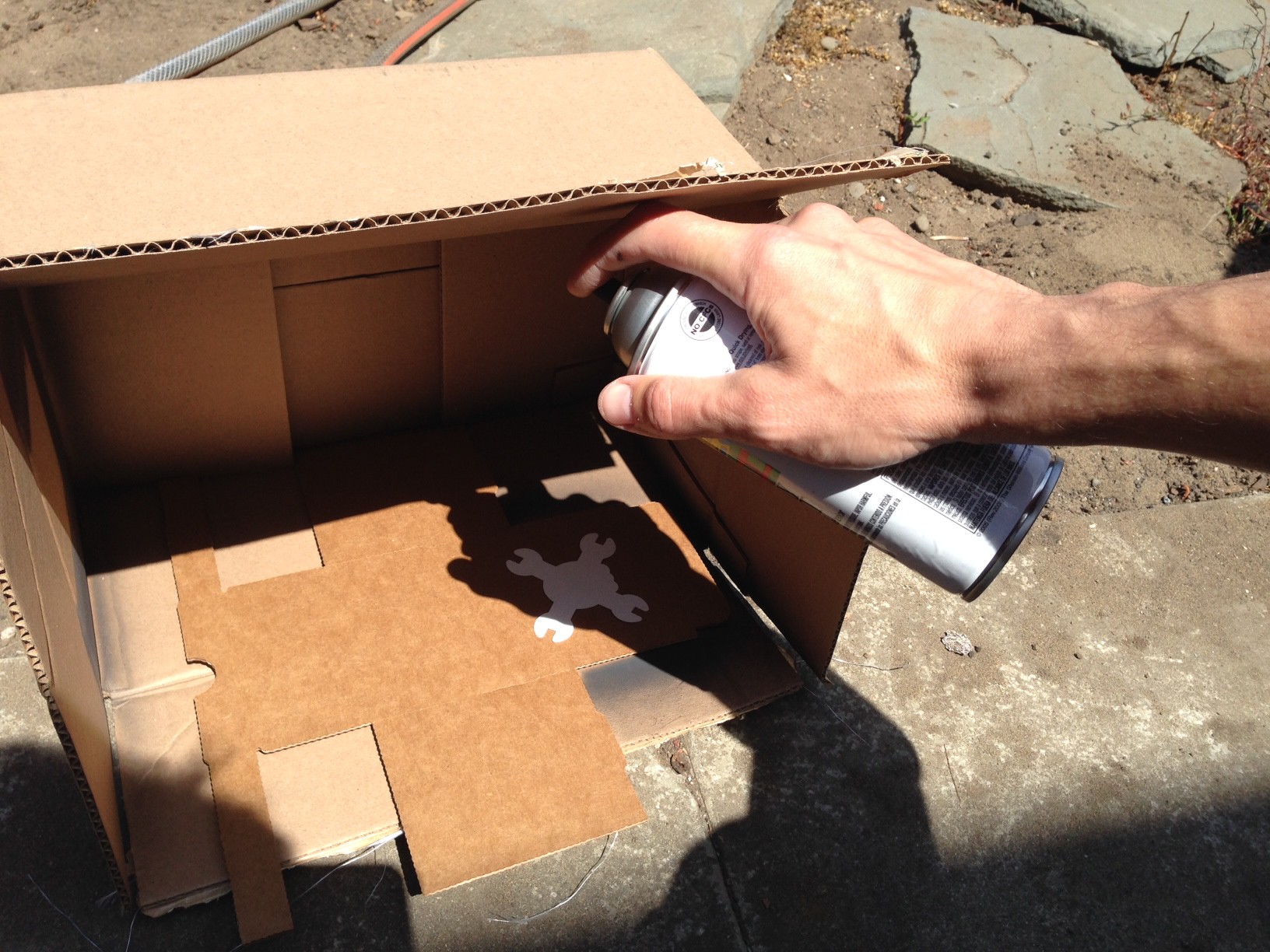
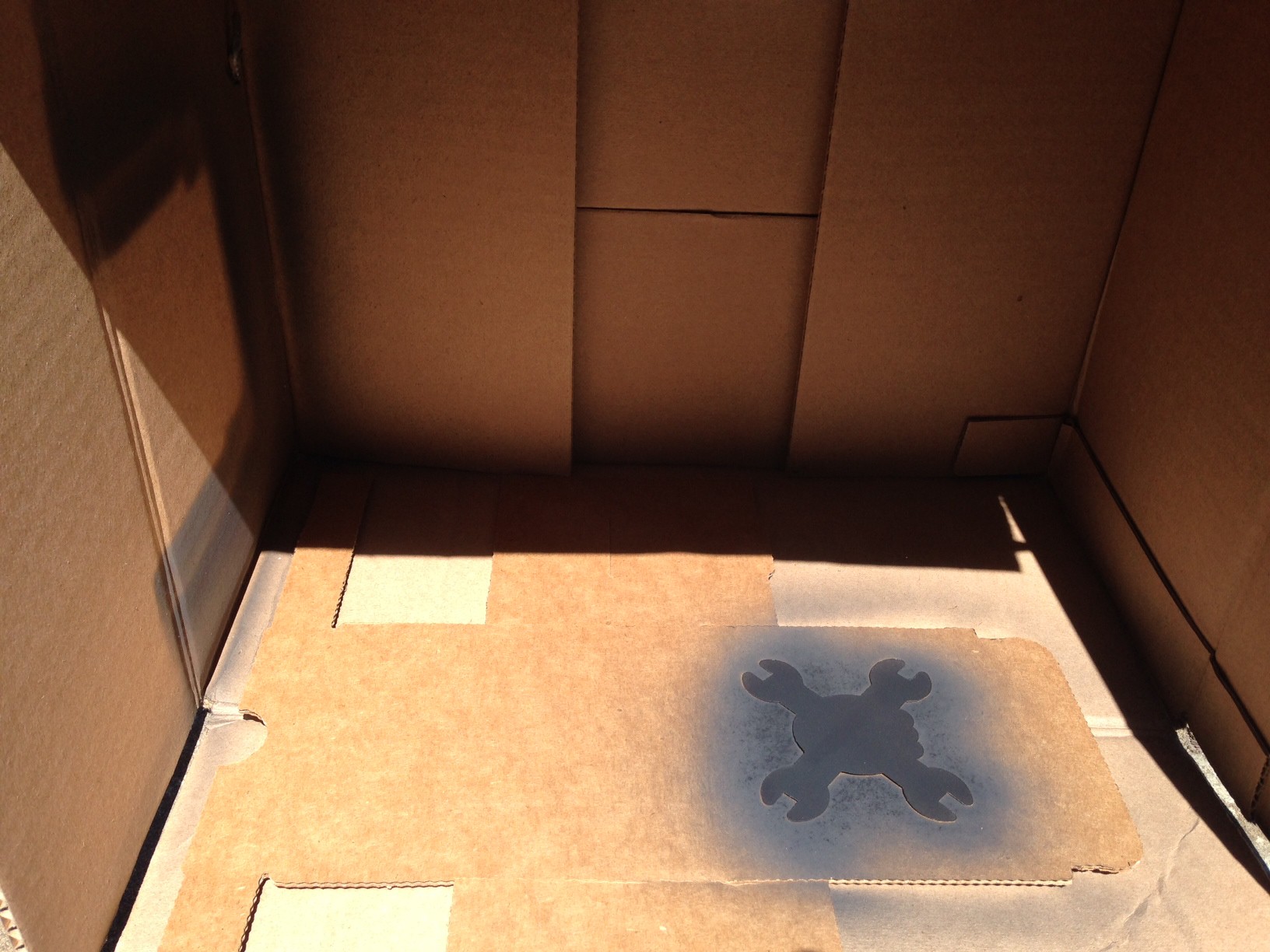 ***
***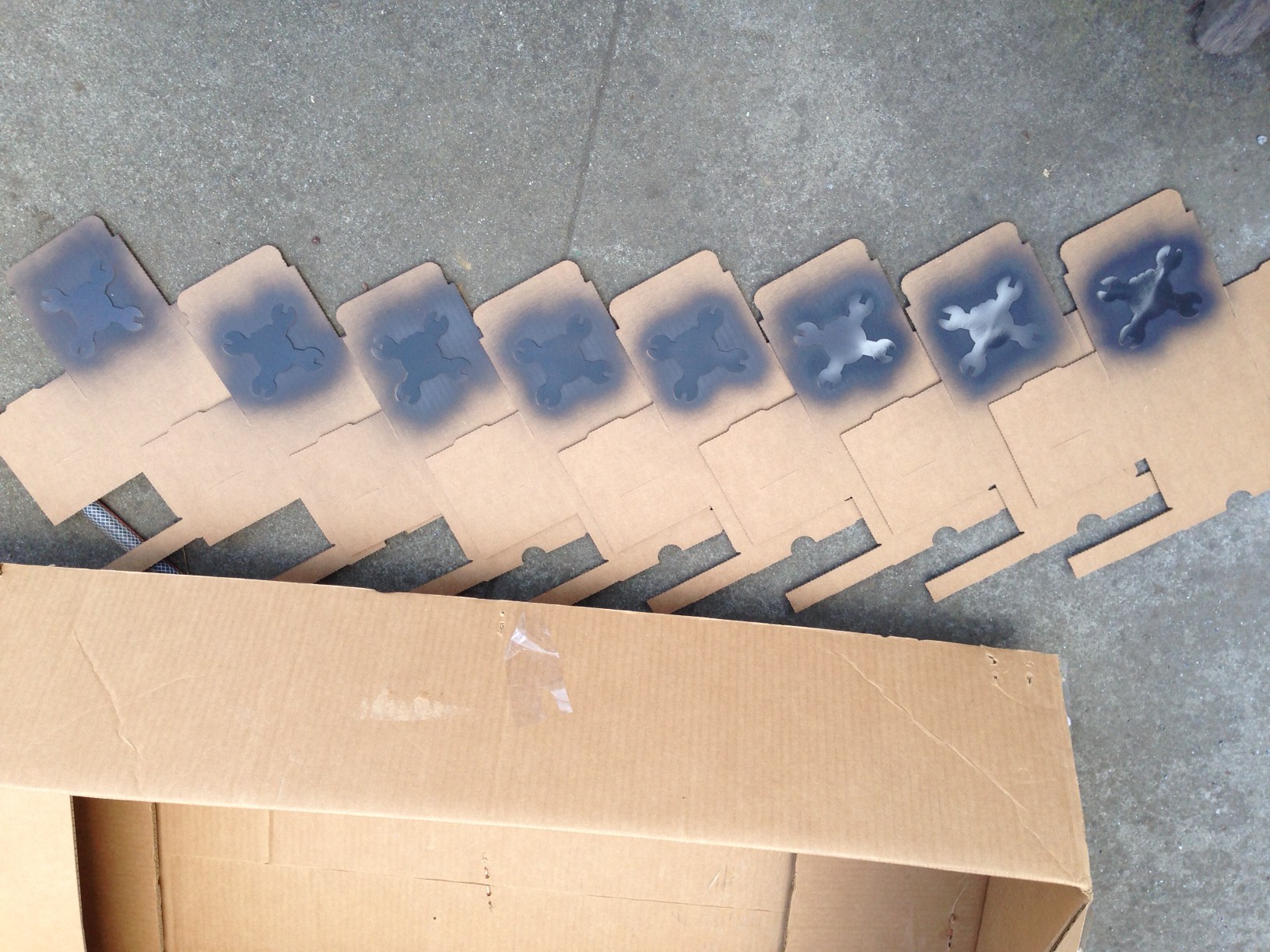
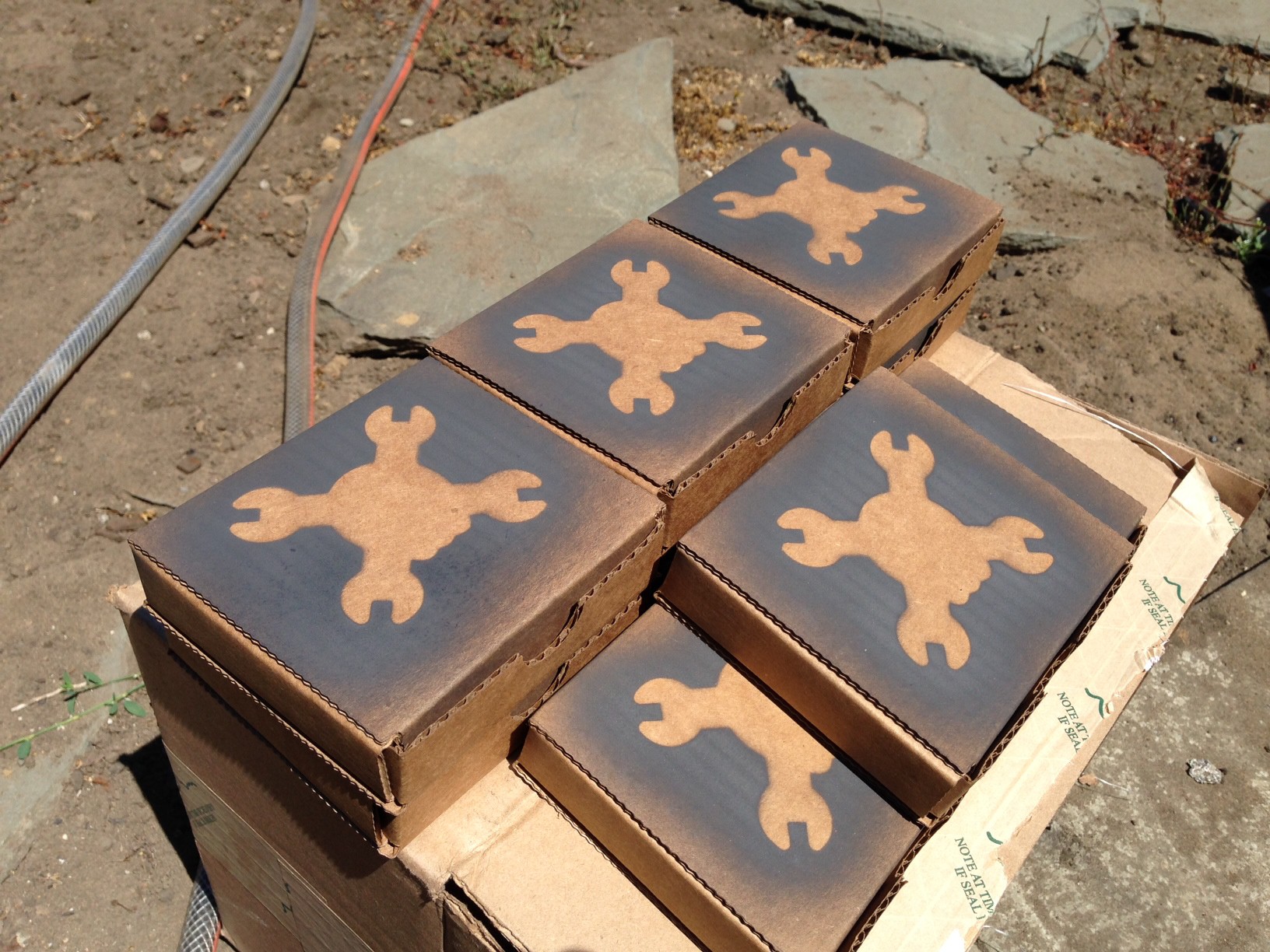 ***
***